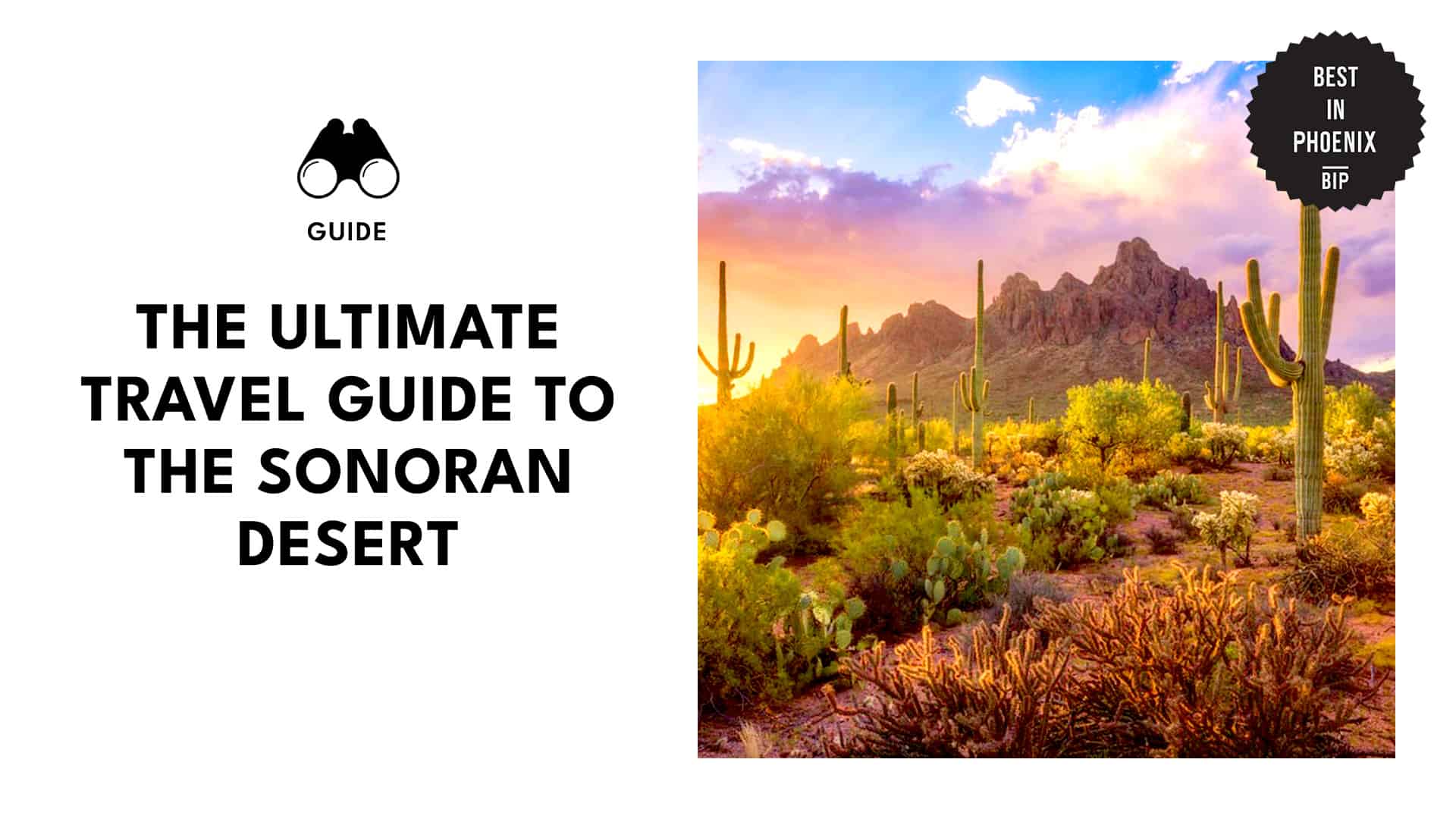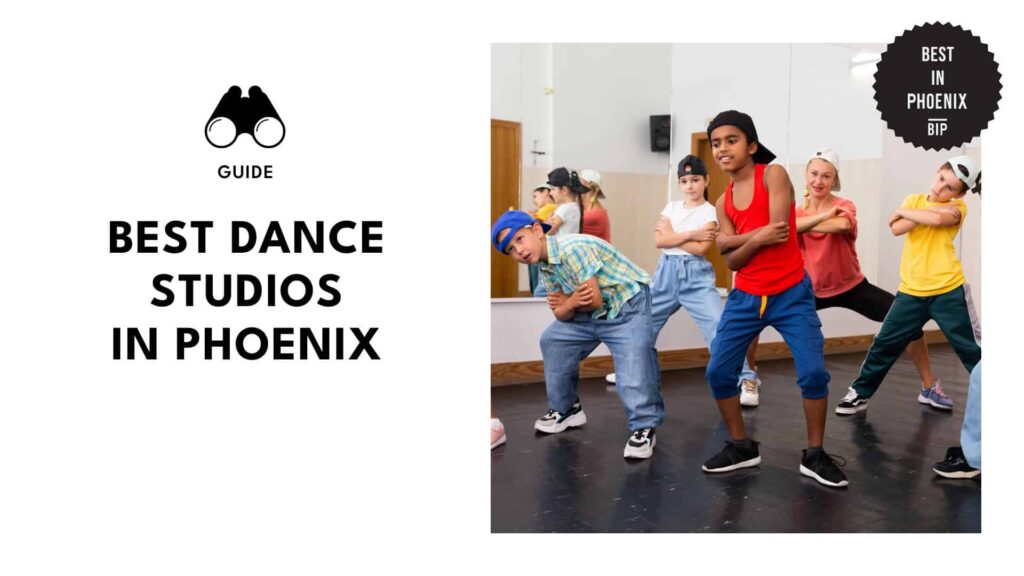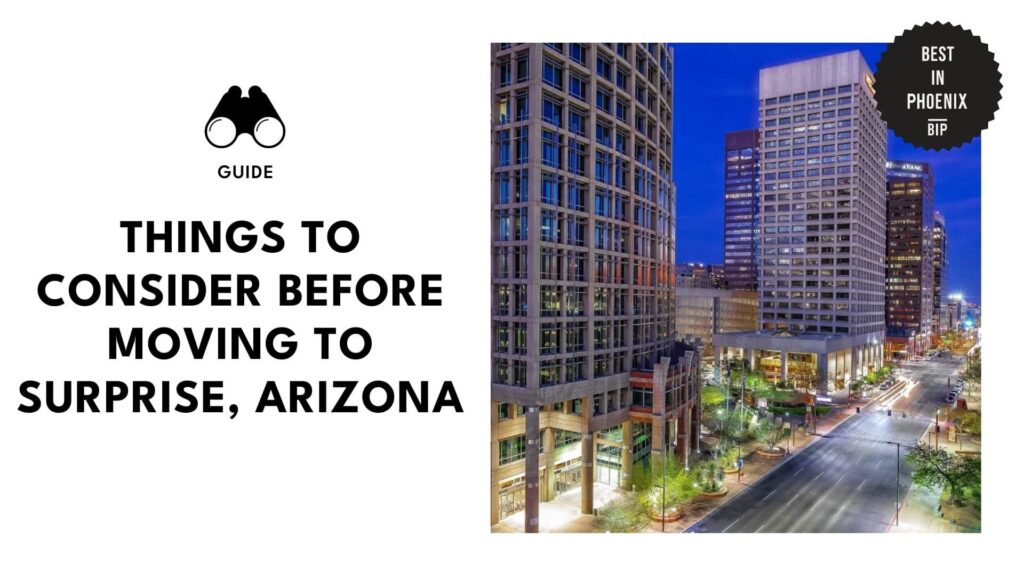Categories > Guides and Tips

The Ultimate Travel Guide to the Sonoran Desert
The Sonoran desert isn’t your typical barren land. It actually has great hiking trails, mountains, ancient canyons, flora, and fauna, making it an excellent place for an unforgettable desert adventure.
Read on as we guide you to the best things to do, the tips and tricks, and where to eat and stay for an unbeatable desert experience.
What is the Sonoran desert?

The Sonoran Desert is a subtropical and hottest desert in Mexico and the United States. It is known for the saguaro cactus, rugged mountains, native petroglyphs, arid landscapes, and diverse wildlife.
The Sonoran Desert spans parts of North America, specifically northwestern Mexico, covering the Sonora, Baja California, Baja California Sur, and the southwestern United States, encompassing southeastern California and the southern half of Arizona.
It covers a vast area of roughly 260,000 square kilometers, making it the second-largest desert in North America. Here’s a breakdown of the Sonoran Desert’s boundaries:
| North | Mogollon Rim, Arizona |
| South | Gulf of California and the Sierra Madre Oriental mountains, Mexico |
| East | Chihuahuan Desert |
| West | Sierra Madre Occidental Mountains, Mexico |
The Sonoran Desert experiences scorching summers with temperatures exceeding 40°C (104°F) and scarce rainfall, averaging around 3 to 15 inches annually.
Apart from towering cacti, the desert has distinctive plants such as palo verde trees, ocotillo shrubs, and prickly pear cacti. It’s also home to coyotes, javelinas, rattlesnakes, Gila monsters, desert tortoises, and bird species.
Time Zone
Mountain Standard Time (MST) (GMT-7) – No Daylight Saving Time
Best Time to Go

Here’s a breakdown of the best times to visit the Sonoran desert, depending on the desired activity!
| Season | Month | Activity | Foot Traffic |
| Spring | March to May | Wildflower and bird-watching | Moderate |
| Summer | June to August | Swimming, kayaking and other water activities | High |
| Fall | September to November | Hiking, bird watching and other outdoor activities | Moderate |
| Winter | December to February | Hiking, stargazing and other outdoor activities | Low |
Things to Know
Currency: United States Dollar
(Check the current exchange rate)
Language: English
Calling Code: +1
How to Get Around
Here are ways to get around the Sonoran Desert.
By Car
Renting a car is the most flexible option for visitors because it will allow you to explore at your own pace and go to remote areas. We recommend choosing a fuel-efficient vehicle if you plan to venture off paved roads.
Via Jeep Tour
If you want a thrilling experience getting around the Sonoran desert, opt for Jeep tours and experience the desert’s off-road terrain. These guided tours navigate rugged trails, share local knowledge, and offer access to hidden gems.
Here are some jeep tour operators in the Sonoran desert:
- AZ Scottsdale Adventure Tours
- Pink Jeep Tours
- Desert Dog Tours
Via Shuttle Services
There are national park shuttles at the Saguaro National Park, Sabino Canyon Recreation Area, and Organ Pipe Cactus National Monument. These free shuttle services connect visitors to centers, picnic areas, hiking trails and waterfalls.
Tips When Visiting the Sonoran Desert
Now that you know the basics, here are some tips for a smooth exploration of the Sonoran Desert.
1. Park at designated areas.

You can park your car in several designated parking areas around the desert and hop on the shuttle system to get to the trailheads, visitor centers, waterfalls and other scenic views.
Here are some parking areas in the Sonoran desert:
- Cactus Forest Scenic Loop Drive Lot
- Rincon Valley Visitor Center Parking Area
- Lower and Upper Loop Parking Areas
- South and North Phoenix Mountains Park
- Pima & Goldwater Lakes Parking Area
- Visitor Center Parking Area
- Kris Eggle Visitor Center Parking Area
- Tuscon Mountain District Parking Area
- Signal Hill Visitor Center Parking Area
2. Explore the desert early in the morning.

Exploring the desert, whether through hiking or sightseeing, in the morning is key to beating the heat. It will be 15 to 30 degrees cooler early in the morning and the prime time for spotting desert wildlife like coyotes, reptiles, foxes, and owls.
3. Drink lots of water and bring snacks.

Drinking one liter of water every hour is a good rule of thumb when doing something active in the desert. The scorching sun, the arid air and the exercise will make you lose a lot of fluids, so stay hydrated to prevent headaches, fatigue or other health risks.
You’ll also need food to fuel your body as you explore the desert. So, pack high-energy, calorie-dense snacks like nuts, dried fruit, granola bars, trail mix, or salty snacks like pretzels or jerky to replenish electrolytes lost through sweat.
4. Always bring a map when exploring the desert.

A map is a safety essential for everyone visiting the Sonoran desert. For instance, a map ensures you stay on the designated path, preventing unintended detours into potentially dangerous terrain or restricted areas.
It will also help you locate hidden gems like secret swimming holes, scenic overlooks, and historical landmarks. A map with marked emergency contact points and evacuation routes becomes invaluable in unexpected situations.
5. Wear lightweight layers and protect your skin from the heat.

When exploring the Sonoran desert, you must stay comfortable and protected against the sun’s rays. So, you should wear long-sleeved shirts and pants made from breathable fabrics like cotton or linen.
You should also apply sunscreen with UPF (Ultraviolet Protection Factor) ratings of 50+ to your skin. As for your footwear, we recommend closed-toe hiking boots with socks made from polyester or wool to protect your feet from uneven terrain.
6. Travel with a backpack.

Choose a comfortable, breathable backpack with adjustable straps and good hip support as you go on an adventure in the Sonoran desert. Pack all your essentials like water, snacks, sunscreen, first-aid kit, and maps in your backpack.
What to Do in the Sonoran Desert
1. Visit the Spur Cross Ranch Conservation Area.
Address: 44000 N. Spur Cross Road
Phone: (480) 488-6601
Website
The Spur Cross Ranch Conservation Area offers over seven miles of trails for hiking, mountain biking, and horseback riding. It’s home to the Metate/Towhee and Tortuga/Spur Cross trail loops and the Black Mountain trail.
You can also go on a horseback adventure through the guided tours from nearby ranches, which allow you to navigate the trails, learn about the desert ecosystem, and enjoy the cactus-studded landscape.
2. Discover exotic plants and flowers at the Desert Botanical Garden.
Address: 1201 N. Galvin Parkway
Phone: (480) 941-1225
Website
The Desert Botanical Garden is home to one of the world’s finest collections of arid plants. It has more than 50,000 desert plants, which you can explore with guided tours and learn about their adaptations, medicinal uses, and cultural significance.
These plants are displayed through thematic trails covering conservation, desert living, plants and people of the Sonoran Desert, and desert wildflowers. It also showcases the Sonoran desert’s artistic spirit through art exhibits or cultural demonstrations.
3. Hike and bike at the Phoenix Mountains Preserve.
Address: 2701 E Squaw Peak Dr, Phoenix
Phone: 602-452-6241
Website
The Phoenix Mountains Preserve is perfect for those who want an outdoor experience without straying too far from the city since it’s only 10 miles north of Downtown Phoenix. It has small mountains and foothills for hiking and biking.
Hiking at the Phoenix Mountains Preserve will lead you to the city’s most famous summits, Camelback Mountain and Piestewa Peak. Conquering them will reward you with 360-degree views of the Phoenix Valley, wildflowers and rock formations.
4. Explore the Lost Dutchman State Park.
Address: 6109 N. Apache Trail, Apache Junction, AZ 85119
Phone: (480) 982-4485
Website
The Lost Dutchman State Park is named after the fabled lost gold mine. Today, it boasts stunning Sonoran desert landscapes, hiking trails, campsites, and picnic facilities, perfect for outdoor enthusiasts and adventure seekers.
This 320-acre park is home to the iconic Superstition Mountains and the Apache Trail, which scenic drive fans love. You’ll also see a lot of saguaro cactus, lakes, and ancient petroglyphs in this park.
5. Camp and enjoy water activities at the Lake Pleasant Regional Park water activities.
Address: 41835 N. Castle Hot Springs Road
Phone: (928) 501-1710
Website
The Lake Pleasant Regional Park is one of the most scenic water recreation areas in the Sonoran desert. The park offers visitors camping, boating, fishing, swimming, hiking, picnicking, kayaking, paddleboarding and wildlife viewing.
At Lake Pleasant, you can cast your line for largemouth bass, crappie, catfish, and sunfish, or just take a refreshing dip in the lake on a hot day or relax on the sandy shores and soak up the Arizona sunshine.
6. Climb to the Dobbins Lookout.
Address: 10409 S. Central Ave., Phoenix
Phone: 602-262-7393
Website
The Dobbins Lookout is the highest accessible point in South Mountain Park. It’s a must-visit spot because of the stone ramada at the top, which shows a panoramic view of Camelback Mountain, downtown Phoenix and mountain ranges.
As you hike to the peak, you’ll be captivated by the diverse desert flora and fauna, like the iconic saguaro cacti, vibrant wildflowers and desert birds soaring overhead.
7. Discover Phoenix’s history at the Papago Park.
Address: 625 N Galvin Pkwy, Phoenix, AZ 85008,
Phone: 602-495-5458
Website
The Papago Park is home to pieces of Phoenix history, from ancient petroglyphs to remnants of early settlers. For instance, the Hole-in-the-Rock Trail will lead you to the iconic butte and past ancient Hohokam petroglyphs etched into the rocks.
You’ll also explore Phoenix’s historic city hall, a 1929 neoclassical building listed on the National Register of Historic Places. There’s also the Mystery Castle, an eccentric, unfinished castle built by Boyce Luther Gulley in the 1930s.
8. Peak out of the Hole-in-the-Rock cave.
Address: 625 N. Galvin Parkway, Phoenix
Phone: (602) 240-5397
Website
The Hole-in-the-Rock cave is an iconic rock formation with a main chamber that gives panoramic views of Papago Park and the Phoenix skyline. The hike to the cave is short and easy, making it suitable for all ages.
Once you reach the top, you’ll step inside the spacious cave carved into the sandstone used as a natural shelter centuries ago. The ancient Hohokam people also used the formation to track the sun’s position through a hole in the rock ceiling.
9. Get close to exotic flora and fauna at the Camelback Mountain.
Address: 4925 E. McDonald Dr., Phoenix, AZ 85018
Phone: (602) 262-6011
Website
The Camelback Mountain is a Phoenix icon that got its name from its two rock formations resembling a kneeling camel’s head and back. It’s home to native species such as the desert tortoise, Chuckwalla lizard and cottontail rabbits.
On the other hand, plant species found here include the saguaro, cholla prickly pear cacti, mesquite and palo verde trees. This is also a favorite hiking spot through the Echo Canyon and Cholla trails.
10. Explore the desert via ATVs with Arizona Outdoor Fun.
Address: 61112 N. Black Canyon Fwy
Phone: (602) 281-4772
Website
The Sonoran Desert, with its vast landscapes, jagged mountains, and hidden canyons, is better explored using an all-terrain vehicle (ATV). This will allow you to cover more ground and access remote areas of the desert.
You can cruise along scenic trails showing you panoramas of saguaro cacti forests, towering mountains, and endless valleys. On the other hand, you can also opt for challenging trails with steep inclines, rocky terrain, and sandy washes of the desert.
11. Go on a hot air expedition over the Sonoran desert.
Address: 702 W. Deer Valley Rd.
Phone: (480) 502-6999
Website
A hot air balloon expedition in the Sonoran Desert is an immersive experience as you can see the whole desert in a bird’s eye view. Wildflowers are nestled among prickly pear cactuses, canyons, and mountain ranges in the valley.
The best time for hot air ballooning is during the cooler months, from October to April, when the skies and the winds are calm. Always dress in layers, as temperatures can change quickly at higher altitudes and wear comfortable shoes.
12. Bike at the South Mountain Park & Preserve.
Address: 10919 S Central Ave, Phoenix, AZ 85042
Phone: (602) 242-4945
Website
The South Mountain Park & Preserve is located south of downtown Phoenix and is one of the largest municipal parks in the United States. It’s a favorite biking spot because its dedicated singletrack trails test your skills and provide adrenaline-pumping adventures.
Mountain bikers can try the Cactus Needle or the West Loop trails and challenge themselves with steep climbs or flow through rolling hills and scenic washes.
13. Explore the Cave Creek Regional Park’s gold mines and historical caves.
Address: 37019 N Lava Ln, Cave Creek, AZ 85331
Phone: http://www.maricopacountyparks.net/park-locator/cave-creek-regional-park/
Website
The Cave Creek Regional Park is nestled in the Sonoran Desert near Phoenix, Arizona, and offers a unique blend of adventure, history, and natural beauty. For instance, you can hike or ride horseback trails to explore the desert.
Then, you must visit the Gold Panning Demonstration Area, where they’ll teach you panning techniques used by 19th-century miners. Finally, explore the Massacre cave and learn about the tragic Apache-settler conflict, pictographs and petroglyphs.
14. See the best McDowell Mountain Regional Park cacti.
Address: 16300 McDowell Mountain Park Drive
Phone: (480) 471-0173
Website
The McDowell Mountain Regional Park was named “The Best Place to See a Cactus” by the Phoenix New Times 2015. It boasts over 200 species of cacti, including the iconic saguaro, prickly pear, cholla, and teddybear cholla.
It’s located just outside Phoenix and easily accessible by car. There are also hiking trails like the Tom’s Thumb Trail and the Gateway Trail that wind through canyons and hills, offering breathtaking views and close encounters with diverse cacti.
15. See the iconic Four Peaks Wilderness.
Address: 4887 N. Highway 89, Camp Verde, AZ 86322
Phone: (928) 535-6111
Website
The Four Peaks Wilderness is a 60,000-acre area named after the iconic Four Peaks, the highest elevation point in Maricopa County, which is 7,600 feet. Popular trails like Brown’s Peak Trail and Tom’s Thumb Trail offer panoramas and varied terrain.
The area holds deep historical significance for the Yavapai and Apache tribes. The ancestral trails have Petroglyphs etched on rocks, offering a glimpse into the history and culture of the region’s first inhabitants.
Where to Stay Near the Sonoran Desert
1. Royal Palms Resort and Spa
Address: 5200 East Camelback Road, Camelback East, Phoenix, AZ 85018
Phone: 602 283-1234
Pricing: $$$
Book Now
The Royal Palms Resort & Spa is a beautiful hideaway resort set among the stunning backdrop of Camelback Mountain. The hotel offers a Spanish villa ambiance with lush walled gardens, stone walkways, antique water fountains, and delightful courtyards.
In this hotel, you can choose from 119 artfully appointed casitas, estate rooms, and villas. It’s listed on the National Register of Historic Places near Camelback Mountain, Old Town Scottsdale, and Phoenix Sky Harbor International Airport.
2. Boulders Resort & Spa
Address: 34631 North Tom Darlington Drive, Scottsdale, AZ 85262
Phone: 888-579-2631
Pricing: $$$
Book Now
The Boulders Resort & Spa is located near the Sonoran Desert foothills of Scottsdale, Arizona. It offers two championship golf courses, casitas, and villas that blend seamlessly with the natural landscape of the Sonoran Desert.
It’s known for four swimming pools and a state-of-the-art fitness center with whirlpool tubs and saunas. The resort is near Blackrock Mountain Trail, with a 24-km hiking trail, and the McDowell Mountain Ranch Lake, where you can kayak or paddleboard.
3. Westward Look Wyndham Grand Resort & Spa
Address: 2400 N. Oracle Rd, Tucson, AZ 85704
Phone: 520-297-1111
Pricing: $$$
Book Now
The Westward Look Wyndham Grand Resort & Spa is nestled amid the Sonoran desert, offering direct access to breathtaking desert trails, stunning mountain vistas, and the unique flora and fauna of the region.
The resort’s architecture evokes a traditional Southwestern hacienda, giving a relaxing blend of the desert, the pool, adobe arches, and firelit courtyards. Each room and suite has a private balcony and unlimited access to breathtaking desert views.
4. Westgate Painted Mountain Golf Resort
Address: 6302 E McKellips Rd, Mesa, AZ 85215
Phone: 480-832-0156
Pricing: $$
Book Now
The Westgate Painted Mountain Golf Resort is located on the edge of the Sonoran Desert. Because of this, you’ll have easy access to day trips to explore Sonoran Desert National Park or go hiking in McDowell Mountain Regional Park.
The resort boasts a championship golf course, multiple swimming pools, a fitness center, a spa, and various restaurants and bars. It’s still within easy reach of Phoenix and its amenities to experience the desert and the city during your stay.
5. JW Marriott Phoenix Desert Ridge Resort & Spa
Address: 5350 E Marriott Dr, Phoenix, AZ 85054
Phone: 480 599-0900
Pricing: $$$
Book Now
The JW Marriott Phoenix Desert Ridge Resort & Spa is situated at the base of the McDowell Mountains, less than 30 km from downtown Scottsdale. You’re close enough to access Sonoran Desert adventures within a comfortable resort setting quickly.
It boasts two championship golf courses and desert-inspired spa treatments. The resort also partners with local experts to offer curated guided hikes, jeep tours, and horseback riding adventures into the Sonoran Desert.
Where to Eat Near the Sonoran Desert
You’ll probably get hungry after hiking and taking in all the breathtaking views of the Sonoran desert, so here are the best places to eat near it.
1. Different Pointe of View
Address: 11111 N 7th St, Phoenix, AZ 85020
Phone: 602-866-6397
Pricing: $$$
Website
The Different Pointe of View is perched on a mountaintop 1,800 feet above the city, capturing the Arizona desert landscape. This restaurant combines American cuisine with Mediterranean influences based on innovative flavors.
They use fresh, local ingredients prepared with regional flair, like cactus pear margaritas and mesquite-grilled fajitas. Must-order delights include the Sonoran hot dog, Prickly Pear margarita and the Pecan Tres Leches Cake.
2. El Chorro
Address: 5550 E Lincoln Dr, Paradise Valley, AZ 85253.
Phone: (480) 948-5170
Pricing: $$
Website
El Chorro sits on 14 desert acres in Paradise Valley, where you can enjoy the captivating Sonoran landscape on the beautiful outdoor patio. This restaurant offers Sonoran-inspired cuisine with fresh, locally sourced ingredients.
El Chorro’s story is woven into the fabric of Scottsdale as it was founded in 1928. Must-order dishes are the Mesquite-grilled skirt steak, Prickly pear margarita and Churro waffle fries.
3. Ocotillo Cafe
Address: 3243 N 3rd St, Phoenix, AZ 85012
Phone: (602) 687-9080
Pricing: $$
Website
The Ocotillo Restaurant offers a variety of American fare with beautiful indoor/outdoor space and several unique dining areas, including a Chef’s Ramada, a Mesquite Terrace, a Beer Garden, and Lucy’s Lawn.
It’s a cafe in the Arizona-Sonora Desert Museum, which means you can grab a bite after exploring the Sonoran Desert. You should try their Prickly Pear margarita, Mesquite-grilled chicken and Tortilla soup.
4. Ironwood Terraces
Address: 2021 N Kinney Rd, Tucson, AZ 85743
Phone: (520) 883-2702
Pricing: $
Website
The Ironwood Terraces is a casual food court in the Arizona-Sonora Desert Museum. It’s the most prominent dining venue at the museum that can cater to up to 330 guests on its outdoor patio that provides a scenic view of the Sonoran Desert.
The menu offers a quick-service style, featuring made-to-order sandwiches, salads, and a few Southwestern specialties. The crowd favorites are the mesquite-grilled chicken sandwich on toasted ciabatta, Sonoran chopped salad and mushroom burgers.
5. Coyote Pause Cafe
Address: 5101 E Indian School Rd, Phoenix, AZ 85018
Phone: (602) 274-1717
Pricing: $$
Website
Coyote Pause Cafe is a desert oasis after a Sonoran desert adventure with its Southwest comfort food dishes like mesquite pancakes, Javelina burgers, and prickly pear margaritas.
If you’re craving a hearty meal, try their Sonoran burritos with slow-cooked meats, fresh pico de gallo, and fluffy tortillas. Then, cool down and unwind in their shaded patio, sway in hammocks, and listen to local music.
Apps to Download for a Trip to the Sonoran Desert
Gaia GPS: For downloadable offline maps, detailed trail information, GPS tracking, satellite imagery and terrain layers to help you plan your route and stay safe while hiking.
Arizona Pocket Maps: Provides detailed offline maps of Arizona, including national parks, monuments, backcountry areas, campgrounds, trails, and historical markers, aiding exploration.
AllTrails: For information about hiking, biking, and running trails throughout the Sonoran Desert based on your location, difficulty level, and desired length.
Visit Phoenix: Provides official information about Phoenix, including events, attractions, recommendations for restaurants and shopping, maps and directions to help you navigate the city.





